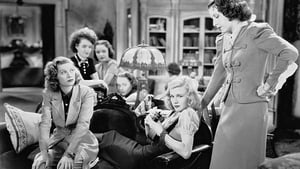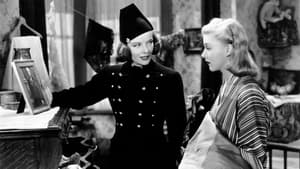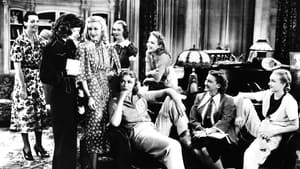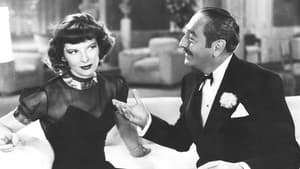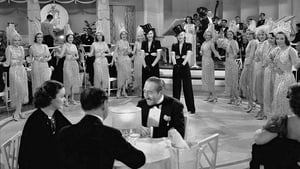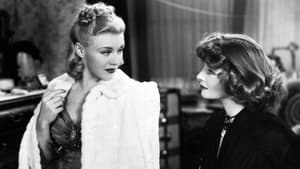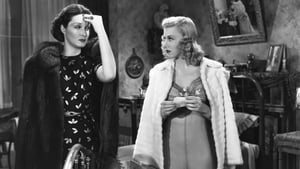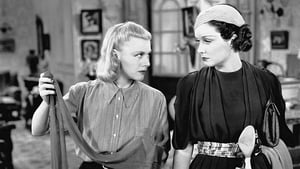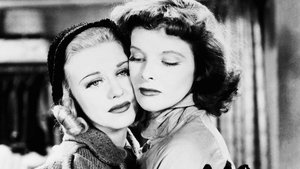Video Sources 0 Views
- Watch trailer
- Stage Door 1937 Colorized

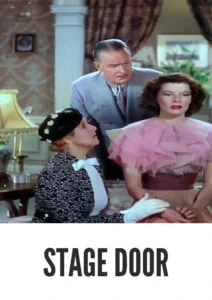
Synopsis
Table of Contents
ToggleDreams, Drama, and Dancing: Stage Door (1937) in Stunning Color

Step into the dazzling world of Broadway hopefuls with Stage Door, a sparkling showbiz comedy-drama from 1937, now beautifully colorized for a viewing experience like never before. Starring Katharine Hepburn and Ginger Rogers, this film, directed by Gregory La Cava, delivers a poignant blend of humor, ambition, and camaraderie within the walls of a theatrical boarding house. Perfect for fans of classic films and backstage stories, this HD download brings a timeless tale of dreams and determination to your screen.
Stage Door Storyline: Life Backstage
Stage Door revolves around the lives of young actresses living in a boarding house in New York City, all striving to make it big on Broadway. Among them are Terry Randall (Katharine Hepburn), a wealthy aspiring actress trying to prove her talent, and Jean Maitland (Ginger Rogers), a seasoned performer with a sharp wit.As the women navigate the challenges of auditions, rivalries, and personal sacrifices, they form deep bonds of friendship and support. The film explores the cutthroat nature of the theater world and the emotional toll it takes on those who pursue their dreams relentlessly. Featuring a stellar ensemble cast and witty dialogue, Stage Door captures the essence of ambition, resilience, and the enduring power of female friendship. Ultimately, Stage Door is a captivating and heartwarming story that celebrates the spirit of those who dare to dream.
Movie Cast
The film features a talented cast of actors who bring this vibrant story to life:
- Katharine Hepburn as Terry Randall
- Ginger Rogers as Jean Maitland
- Adolphe Menjou as Anthony Powell
- Gail Patrick as Linda Shaw
- Constance Collier as Catherine Luther
Movie Genre
Stage Door falls into the genre of comedy-drama, with elements of romance and social commentary that are characteristic of Hollywood’s Golden Age. Its witty dialogue, memorable characters, and insightful portrayal of the theater world make it a captivating and engaging film.
Historical Context: Hollywood’s Golden Age
Released in 1937, Stage Door represents a high point in Hollywood’s Golden Age, showcasing the era’s emphasis on strong female characters and sophisticated storytelling. The film was produced during a time when movie studios had significant influence. Stage Door is a testament to the era’s filmmaking prowess, offering valuable insights into the social dynamics and artistic trends of the time.
Colorization Details
This colorized version of Stage Door has been meticulously restored using modern digital techniques, enhancing the visual appeal while preserving the film’s original charm and atmosphere. The colorization process involved carefully analyzing the grayscale tones of the original black and white footage and assigning appropriate colors to each scene. While the specific software used remains proprietary, the techniques employed included advanced algorithms for color palette selection and image enhancement. This painstaking process brings new life to the characters and settings, making the story even more engaging for modern audiences. While some may debate the merits of colorizing classic films, it introduces these films to a broader audience, ensuring their legacy for future generations.
Technical Details
- Director: Gregory La Cava
- Screenplay: Morrie Ryskind, Anthony Veiller
- Based on: the play by Edna Ferber and George S. Kaufman
- Cinematography: Joseph H. August
- Edited by: William Hamilton
- Production Company: RKO Radio Pictures
- Distributed by: RKO Radio Pictures
- Runtime: 92 minutes
Technical Specifications
- Download Format: MP4
- Resolution: HD (1080p)
- Compatibility: Compatible with most devices, including smartphones, tablets, computers, and smart TVs.
Reviews and Critical Reception
Stage Door (1937) is celebrated for its sharp wit, stellar performances, and insightful portrayal of the lives of aspiring actresses. Often regarded as one of the best films about the theater world, it remains a beloved classic of Hollywood’s Golden Age. As a critically acclaimed and commercially successful film, Stage Door provides a unique perspective on the dreams and struggles of those who pursue a life on the stage.
FAQs
- Q: What is Stage Door about?
- A: Stage Door is a comedy-drama about a group of young actresses living in a boarding house in New York City, all striving to make it big on Broadway.
- Q: Is Stage Door (1937) considered a classic film?
- A: Yes, Stage Door is widely regarded as a classic of Hollywood’s Golden Age, known for its sharp wit and stellar performances.
- Q: Is this version of Stage Door colorized?
- A: Yes, this version has been professionally colorized to enhance the viewing experience.
- Q: What makes Stage Door interesting for classic film fans?
- A: Stage Door offers valuable insights into the lives and dreams of aspiring actresses during Hollywood’s Golden Age, showcasing the era’s emphasis on strong female characters and sophisticated storytelling.
- Q: What is the download format?
- A: The download format is MP4, which is compatible with most devices.
- Q: What resolution is the download?
- A: The resolution is HD (1080p), providing a high-quality viewing experience.
Download Now in HD!
Watch Stage Door Today!
